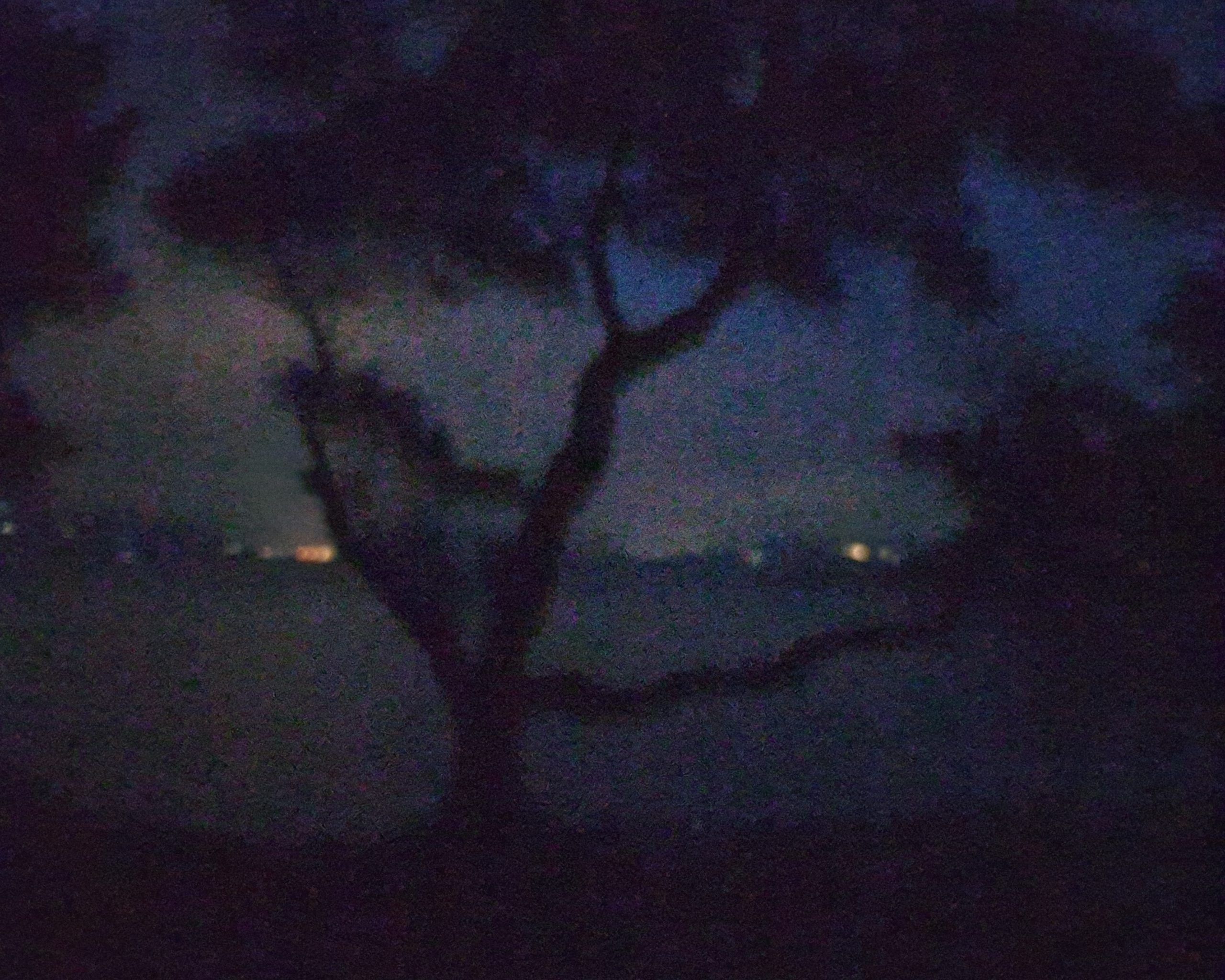
Silent sparks
Tired travellers under a sullen sky, we pass the sheds behind the taverna. Our feet feel out the rutted concrete track in the darkness. Bags of first-night shopping dig into our hands: coffee, wine, fruit. Then an earthly shooting star appears. A firefly, looking for love.
More silent sparks drift ahead and now we’re following them, down the dark path to where the olive grove meets the pebbled shore. The sea shushes quietly.
In the tree-framed darkness, a constellation is at work. The airspace is full. Intermittent squibs flash, every firefly on its own trajectory. Some zip past, others float briefly in front of our faces. We pick one out and follow it, a tracer drone heading into the dark. No sound, just light, travelling.
The beach-grove visit becomes our nocturnal routine. Sole spectators, we stand, close-wrapped in wonder at our portal into the peace of the night.
It’s nearly the end of their season.
On our last morning, a man is working beneath the trees, wildflowers falling as he goes. I hear his strimmer for the rest of the day.
We approach the final night’s show with foreboding. A small black-and-white cat has tagged along, and waits as we watch. The fireflies are still there, continuing their mute concert among the trees. The silence feels heavier than before.
——————-
Fireflies are not flies at all, but soft-bodied beetles of the Lampyridae family. There are more than 2,000 species, each with their own unique light pattern. The flying flashers are the roving males, seeking to connect with the females who wait, glowing, in the undergrowth.
Their light comes from an enzyme called luciferin reacting as oxygen is pulled across their abdomen. It produces light, but little heat. Scientists in America have nearly succeeded in replicating the technology to create LED lights that can function without a power source.
All of the Lampyridae are in decline, for three main reasons. One is loss of habitat, as woodland and scrub makes way for new houses like our temporary home. A second is pesticides, possibly used to grow the tomatoes in our shopping bags. The third is light pollution, which confuses their signals. Energy-saving LED streetlights are worse for them than old-fashioned sodium ones. Blue light is a particular problem, as the male fireflies need to tune into the green light of the females. Some Paxos villas have swimming pools, lit up at night for effect: bright blue slabs dotting the hillside.
——————-
And as I sat there brooding on the old, unknown world, I thought of Gatsby’s wonder when he first picked out the green light at the end of Daisy’s dock. F. Scott Fitzgerald, The Great Gatsby
© Laura Parker

© Laura Parker
